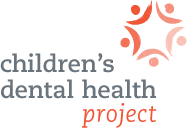The Children's Dental Health Project's blog
New brief outlines cost-effective strategies for reducing tooth decay
CDHP's new policy brief presents policymakers with a number of options aimed at preventing and managing early childhood caries (ECC), the disease that causes tooth decay. While we’ve seen significant progress in expanding coverage and access to oral health care since the Surgeon General’s call to action in 2000, ECC remains the most prevalent chronic condition among children and adolescents with nearly half of all children still entering kindergarten with cavities.
In addition, less than half of all children enrolled in Medicaid — which serves children at highest risk for ECC — see a dentist each year. The good news is that ECC is almost completely preventable. But we need to change the current oral health care system if we are to adequately address the needs of the children who are at highest risk for poor oral health.
In partnership with the Centers for Disease Control and Prevention (CDC), the New York State Bureau of Dental Health, and the Health Foundation of Western and Central New York, CDHP developed a system dynamics model to examine cost-effective solutions to reduce the prevalence of tooth decay in young children. Building on previous research, this model simulates the health impact and cost-savings associated with various strategies to reduce and suppress ECC among New York State’s Medicaid population over a 10-year period.
CDHP’s brief, written independently of our partners, pairs the model’s findings on cost-effective oral health interventions with policy opportunities to improve dental benefit design, expand the delivery of preventive oral health services beyond the four walls of the dentist’s office, reduce the transmission of cavity-causing bacteria from caretaker to child, and provide oral health care based on a child’s individual risk for disease while achieving cost savings for state Medicaid programs.
While the underlying research is based on data from New York State, the recommended approaches are opportunities for policymakers nationwide. By capitalizing on policy opportunities like those in the Affordable Care Act to bolster existing public health interventions and incentivize a personalized approach to oral health care, states can make significant progress towards the triple aim of improved health outcomes and reduced care at lower costs.
